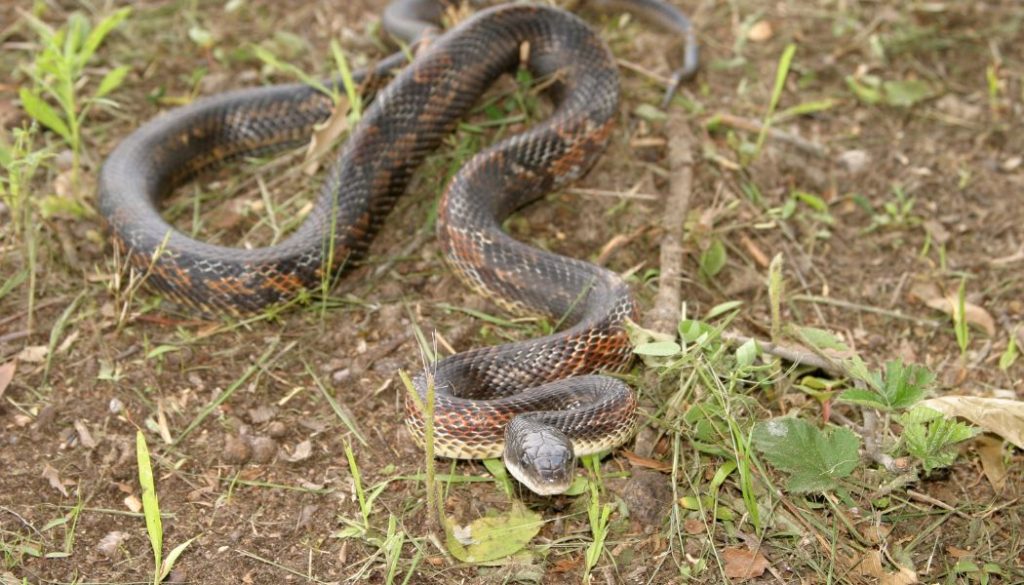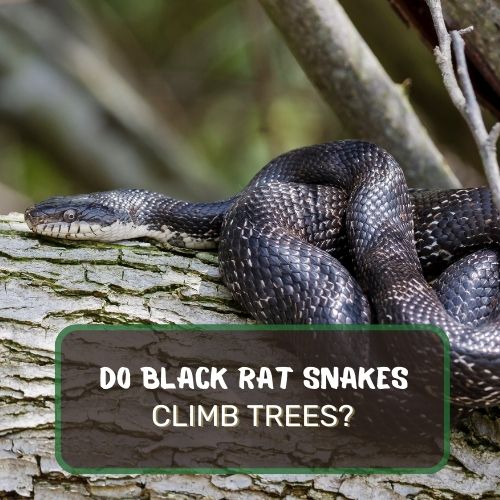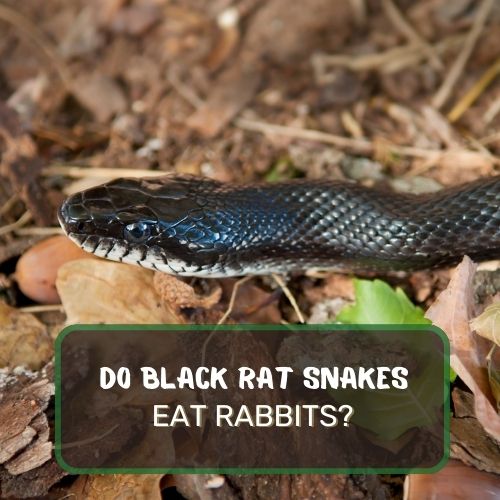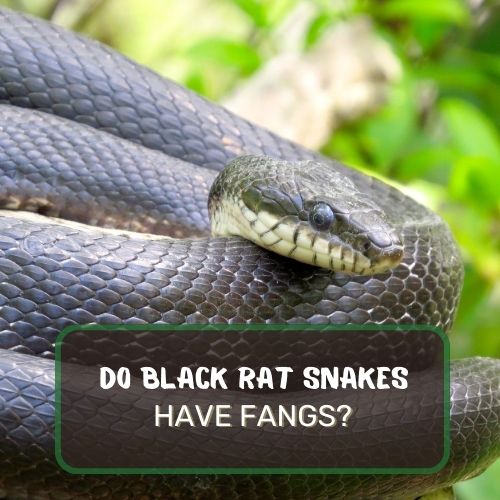Welcome to the world of black rat snakes as pets! This article delves deep into whether these serpentine creatures make good companions.
Yes, black rat snakes can be good pets. They are non-venomous, generally docile, and have simple dietary needs. Suitable for beginners, they require a spacious enclosure and regular care. However, they are not ideal for everyone, given their size and specific habitat requirements.
We’ll explore various facets of black rat snake care, including their size and physical characteristics, interaction with humans and other animals, and essential aspects like feeding guidelines and habitat setup.
Additionally, we’ll discuss common health issues and their prevention, understand their behavior during shedding, and break down the initial setup and ongoing care costs.
Finally, we weigh the advantages and challenges of keeping black rat snakes as pets. Get ready to uncover the fascinating details of living with these unique reptiles!

Table of Contents
- 1 Size and Physical Characteristics of Black Rat Snakes
- 2 Their Interaction with Humans and Other Animals
- 3 Guidelines for Feeding in Captivity
- 4 Ideal Enclosure Size and Setup
- 5 Common Health Issues and Their Prevention
- 6 Understanding Their Behavior During Shedding
- 7 Initial Setup and Ongoing Care Costs
- 8 Advantages and Challenges in Keeping Them as Pets
- 9 Conclusion
Size and Physical Characteristics of Black Rat Snakes
When considering black rat snakes as pets, it’s crucial to understand their physical characteristics, as these factors greatly influence their care and housing needs.
Typically, black rat snakes are medium-sized serpents, reaching an adult length of about 4 to 6 feet. This size makes them manageable for most snake enthusiasts, yet large enough to make a striking impression.
Unlike the vibrant hues of some exotic snakes, black rat snakes boast a more subdued elegance. Their scales are predominantly black, but with a closer look, you might notice a subtle interplay of dark browns and even hints of bluish-black. Their underbellies contrast this darkness with a creamy, almost patterned appearance.
The sleek, muscular build of black rat snakes is not just for show. It plays a crucial role in their mode of survival – constriction.
When hunting, they employ this strength to subdue prey, a testament to their power and agility. For a pet owner, this means providing an enclosure that not only accommodates their size but also their active nature.
Now, don’t let their robust physique intimidate you. These snakes are non-venomous and generally pose no threat to humans. In fact, their physical attributes make them fascinating pets, especially for those intrigued by the natural elegance and prowess of reptiles.
Their Interaction with Humans and Other Animals
Diving into the world of black rat snakes, their interactions with humans and other animals reveal a surprisingly docile nature. This trait makes them quite suitable for a household pet, especially for those new to snake ownership.
Black rat snakes, despite their daunting appearance, are known for their non-aggressive demeanor. They are not prone to biting or showing hostility towards humans. In fact, with regular, gentle handling, they often become accustomed to human interaction and can even display a level of comfort and ease when being handled.
It’s this gentle nature that breaks the stereotype of snakes being aloof and unfriendly pets.
However, it’s crucial to respect their boundaries. Like any animal, black rat snakes can feel threatened or stressed, especially in unfamiliar or loud environments. Ensuring they have a quiet, comfortable space is key to maintaining their calm disposition.
Interaction with other animals, particularly household pets like cats or dogs, should be approached with caution. While black rat snakes aren’t aggressive, the presence of larger animals can be stressful for them.
Additionally, their hunting instincts might kick in when confronted with smaller pets, like hamsters or birds. As a rule of thumb, it’s best to keep them securely housed and away from other pets to avoid any potential stress or accidents.
Black rat snakes offer a unique blend of tranquility and intrigue in their interactions. They strike a balance between being low-maintenance and providing the engaging experience of caring for an exotic pet. For those considering a foray into the world of reptile pets, black rat snakes stand out as a compelling choice.
Guidelines for Feeding in Captivity
Feeding black rat snakes in captivity is a straightforward affair, reflecting their natural dietary habits. In the wild, these snakes are skilled hunters, primarily feasting on rodents like mice and rats. This diet is easily replicated in a captive environment, making their nutritional needs relatively simple to meet.
The preferred choice for captive feeding is frozen-thawed rodents, which are not only convenient but also safer for the snake. Live prey can potentially harm the snake, whereas pre-killed offerings avoid this risk. It’s essential to ensure the rodents are fully thawed to body temperature before feeding, as cold food can harm your snake.
The size of the prey should be appropriate for the size of the snake. A good rule of thumb is to offer prey that is roughly the same width as the widest part of the snake’s body. Younger snakes require feeding more frequently, about once every 5-7 days, while adult snakes thrive on a meal every 7-14 days.
It’s important to remember that overfeeding can lead to obesity and health issues. Monitoring your snake’s weight and adjusting the feeding schedule as needed is crucial. Adhering to these guidelines ensures your black rat snake remains healthy, active, and thriving.
Ideal Enclosure Size and Setup
Creating the perfect home for a black rat snake is key to its well-being in captivity. Given their size and active nature, these snakes require a spacious enclosure that allows them to move freely and exhibit natural behaviors. A general guideline is to provide a vivarium that is at least as long as the snake and half as wide.
For an average adult black rat snake, an enclosure measuring around 6 feet in length and 3 feet in width would be ideal. This space not only accommodates their length but also provides ample room for exploration and exercise.
Height is also a factor to consider, as these snakes are adept climbers. An enclosure with sufficient height and branches or shelves allows them to indulge in this natural behavior.
The enclosure should include a heat source to maintain a temperature gradient, with a warmer basking area and a cooler zone. This setup enables the snake to regulate its body temperature effectively. Additionally, a hideaway is essential for their sense of security, along with a water dish large enough for soaking.
By meeting these habitat requirements, you create an environment that not only mimics their natural habitat but also supports their physical and mental well-being in captivity.
Common Health Issues and Their Prevention
Like all pets, black rat snakes can encounter health issues, but with proper care, most of these can be prevented. One common concern is respiratory infections, indicated by wheezing, mucus around the nostrils, or labored breathing.
These often result from improper humidity levels or temperatures within the enclosure. Maintaining the correct environment, with proper ventilation and clean conditions, is crucial in preventing these infections.
Parasitic infestations, both internal and external, are another issue. Regularly cleaning the enclosure and monitoring your snake for signs of parasites, like lethargy or unusual feces, can help in early detection and treatment. It’s also advisable to get newly acquired snakes checked by a veterinarian.
Obesity can occur in captive black rat snakes due to overfeeding or lack of exercise. Monitoring their diet and ensuring they have enough space to move around can prevent this. Additionally, skin issues, like incomplete shedding, are often related to inadequate humidity. Providing a moist hide or a humidity box during shedding periods can help.
Preventative care, through regular health checks and maintaining an optimal living environment, is the best way to keep your black rat snake healthy and happy.
Understanding Their Behavior During Shedding
Shedding, or ecdysis, is a natural process for black rat snakes and understanding this behavior is essential for their care. Typically, a black rat snake will shed its skin every few months, more frequently when they are young and growing. The shedding process is influenced by several factors, including humidity, nutrition, and overall health.
Before a shed, you might notice your snake’s skin becoming dull and their eyes turning a milky blue. This is known as the “blue phase” and indicates that the shedding process will begin soon. During this phase, your snake’s vision is impaired, which can make them more irritable or shy than usual. It’s best to limit handling during this time to reduce stress.
To aid in shedding, ensure that the humidity in the enclosure is slightly elevated. This helps in loosening the old skin. Providing a rough surface, like a rock or a piece of wood, can also assist your snake in rubbing off the old skin.
If the shed does not come off in one piece, this could be a sign of low humidity or health issues. In such cases, a lukewarm bath or a visit to the vet might be necessary. Understanding and supporting your black rat snake during shedding is crucial for their well-being and gives you a chance to witness an intriguing aspect of their natural life cycle.
Initial Setup and Ongoing Care Costs
The initial setup for a black rat snake can be a significant investment, but it’s essential for their health and happiness. The primary expense is the vivarium, which should be spacious and secure.
Depending on the size and material (glass, plastic, or wood), this can cost anywhere from $100 to $300. Heating elements like a heat lamp or a ceramic heater are crucial for maintaining the right temperature, adding another $30 to $50 to the setup cost.
Other essentials include a water dish, hiding spots, and climbing structures, which can range from $20 to $50 depending on the quality and complexity. Substrate for the bottom of the enclosure is another recurring expense, usually around $10 to $20 per change, which varies based on the size of the enclosure and the type of substrate used.
Ongoing costs include feeding, which mainly consists of frozen-thawed rodents. Depending on the snake’s size and appetite, this can range from $10 to $30 monthly. Regular veterinary check-ups, though not frequent, should also be factored in, potentially adding $50 to $100 annually.
Overall, while the initial setup for a black rat snake can be somewhat costly, the ongoing expenses are relatively manageable, especially compared to other pets. The key is in the initial investment to ensure a healthy and enriching environment for the snake.
Advantages and Challenges in Keeping Them as Pets
Advantages
- Low Maintenance: Black rat snakes have simple dietary needs and don’t require daily feeding or walking.
- Long Lifespan: They can live for 20-30 years, providing a long-term companionship.
- Non-Aggressive Nature: Generally docile and non-venomous, making them safe around responsible adults and older children.
- Pest Control: In an outdoor setting, they can help control rodent populations.
- Unique Pet Experience: Offers a unique and rewarding experience different from traditional pets.
Challenges
- Size and Enclosure: Require a large enclosure due to their size, which can be a significant space commitment.
- Dietary Needs: Feeding live or frozen rodents may be off-putting for some owners.
- Shedding and Health Monitoring: Requires careful monitoring during shedding phases and an understanding of potential health issues.
- Temperature and Humidity Control: Maintaining the correct environmental conditions can be challenging and requires regular monitoring.
- Social Misunderstanding: Facing misconceptions about snakes from visitors or family members can be a common issue.
- Legal Restrictions: In some areas, keeping snakes as pets may be restricted or require special permits.
Owning a black rat snake comes with a unique set of advantages and challenges. While they are fascinating and relatively easy to care for, they do require specific environmental conditions and a commitment to understanding their unique needs.
For the right person, however, the rewards of keeping such an exotic pet can be immense.
Conclusion
As you’ve learned, black rat snakes can indeed be excellent pets. Their docile nature, fascinating behavior, and manageable care requirements make them a great choice for reptile enthusiasts.
Remember, their well-being hinges on a proper habitat, a diet of rodents, and understanding their unique needs, especially during shedding.
If you’re ready for the commitment, these captivating creatures can bring a lot of joy and intrigue into your life.
Embrace the adventure of caring for a black rat snake and enjoy the rewarding experience of a less conventional, yet utterly fascinating pet.




0 Comments